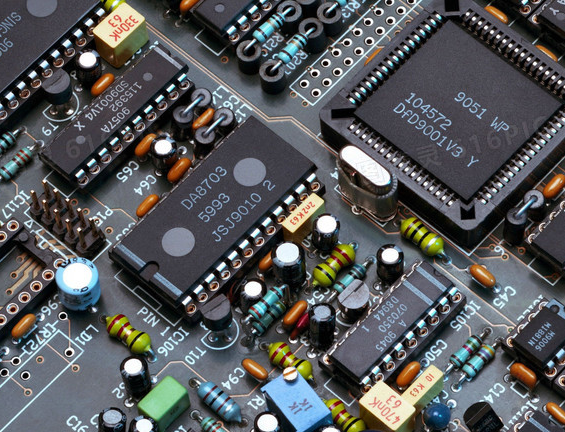Chinese-English Comparison of Electronic Components: A Guide for Global Engineers
Introduction
In the intricate world of electronics, clear and precise communication is not just a convenience—it is an absolute necessity. A single misunderstood component specification can lead to project delays, costly manufacturing errors, or complete system failures. For engineers, procurement specialists, and hobbyists navigating the global supply chain, one of the most significant challenges lies in bridging the linguistic gap between Chinese and English technical terminology. China stands as the world’s manufacturing powerhouse for electronic components, from ubiquitous resistors and capacitors to sophisticated microcontrollers and sensors. Consequently, interacting with Chinese datasheets, supplier catalogs, and technical support has become a routine part of the global electronics workflow. This article provides a comprehensive Chinese-English comparison of electronic components, aiming to demystify the terminology, highlight critical differences in documentation, and offer practical strategies for effective cross-cultural technical communication. Understanding these nuances is crucial for anyone looking to source, specify, or integrate components efficiently and accurately.

Part 1: Fundamental Component Terminology - Bridging the Language Gap
The foundation of any technical discussion is a shared vocabulary. In electronics, this begins with the most basic building blocks. While direct translations often exist, some terms have conceptual differences or are abbreviated differently, which can cause confusion.
Passive components form the bedrock of most circuits. In English, we refer to Resistors ®, Capacitors ©, and Inductors (L). Their Chinese counterparts are equally straightforward but essential to recognize: 电阻 (Diànzǔ) for Resistor, 电容 (Diànróng) for Capacitor, and 电感 (Diǎngǎn) for Inductor. When looking at a Bill of Materials (BOM) or a schematic from a Chinese supplier, these characters will be ubiquitous. For example, a schematic symbol for a resistor might be labeled simply as “R1,” but the accompanying BOM could list it as “电阻-1.”
The world of semiconductors is where terminology can become more complex. Common devices include: * 晶体管 (Jīngtǐguǎn) - Transistor * 二极管 (Èrjíguǎn) - Diode * 集成电路 (Jíchéng Diànlù) - Integrated Circuit (IC) * 单片机 (Dānpiànjī) - Microcontroller Unit (MCU)
A key point of difference lies in the naming of specific semiconductor types. For instance, a Metal-Oxide-Semiconductor Field-Effect Transistor (MOSFET) is frequently referred to by its abbreviation in English. In Chinese, it is often called 场效应管 (Chǎng Xiàoyìng Guǎn), which literally translates to “Field Effect Tube.” Similarly, a Light-Emitting Diode (LED) is consistently known as 发光二极管 (Fāguāng Èrjíguǎn) or “Light-Emitting Diode.”
Another critical area is packaging. The English term “package” refers to the physical case that houses a semiconductor chip. The Chinese equivalent is 封装 (Fēngzhuāng). Understanding package names is vital for PCB design and assembly. For example: * DIP (Dual In-line Package) is commonly known as 双列直插式封装 (Shuāngliè Zhíchā Shì Fēngzhuāng). * SMD/SMT (Surface-Mount Device/Technology) is referred to as 贴片元件/技术 (Tiēpiàn Yuánjiàn/Jìshù). * QFP (Quad Flat Package) is 四方扁平封装 (Sìfāng Biǎnpíng Fēngzhuāng).
Familiarity with these fundamental terms is the first step toward eliminating misunderstandings in component selection and procurement. Platforms that specialize in aggregating global component data, such as ICGOODFIND, can be invaluable in this regard, as they often provide cross-referenced terminology and datasheets in multiple languages.
Part 2: Decoding Datasheets and Specifications - Beyond Direct Translation
A component’s datasheet is its definitive technical passport. However, a direct word-for-word translation of a Chinese datasheet may not capture the full technical intent or highlight the most critical parameters in the way an English-speaking engineer expects. The structure and emphasis can differ.
Absolute Maximum Ratings are universally critical. In English, this section is prominently labeled. In Chinese datasheets, look for 绝对最大额定值 (Juéduì Zuìdà Édìng Zhí). Parameters here, such as supply voltage, operating temperature, and storage temperature, are non-negotiable limits. The Chinese term for operating temperature, 工作温度 (Gōngzuò Wēndū), must be clearly identified to ensure the component will function in the intended environment.
Electrical Characteristics tables contain the core performance data. Key parameters include: * 工作电压 (Gōngzuò Diànyā) - Operating Voltage * 电流 (Diànliú) - Current * 功耗 (Gōnghào) - Power Consumption * 频率响应 (Pínlǜ Xiǎngyīng) - Frequency Response
One area where subtle differences can arise is in the interpretation of tolerance and accuracy. The English term “tolerance” (e.g., ±5%) translates to 公差 (Gōngchā) or 容差 (Róngchā). While the mathematical meaning is identical, the context in which these values are guaranteed can sometimes vary between manufacturers. It is always prudent to confirm test conditions.
Perhaps the most significant difference lies in the approach to performance curves and graphs. English-language datasheets from Western manufacturers often include extensive graphs detailing performance over a range of conditions. Some Chinese datasheets may provide fewer such curves, placing greater emphasis on the tabulated values under specific test conditions. An engineer must be aware of this and may need to request additional characterization data if it’s not readily available.
Finally, ordering information and part numbering can be a major source of confusion. Chinese manufacturers often have their own proprietary part numbering systems that do not directly align with Western standards. A component listed as “XC6206P332MR” by one manufacturer might have a functionally equivalent part from a Chinese supplier with a completely different alphanumeric code. Cross-referencing services and platforms that verify component authenticity and specifications are essential tools for navigating this complexity.
Part 3: Sourcing, Procurement, and Practical Communication Strategies
Successfully navigating the terminology is only half the battle; applying this knowledge in real-world sourcing and communication is where the value is realized. The process of finding reliable suppliers and ensuring you get exactly what you specify requires a strategic approach.
When searching for components on Chinese B2B platforms or search engines, using the correct Chinese keywords is paramount. Relying on English alone will severely limit your results. For example, searching for “16-bit microcontroller” will yield fewer relevant results than searching for 16位单片机 (16 Wèi Dānpiànjī). Combining the component name with specification terms can be very effective: e.g., 贴片电阻 10k 1% (Tiēpiàn Diànzǔ 10k 1%) for a “10k Ohm 1% SMD Resistor.”
Effective communication with suppliers involves more than just language translation; it involves cultural nuance. When discussing quality assurance and certifications, specific terms are crucial. Inquiries should include: * RoHS合规吗?(RoHS Hégūi ma?) - Is it RoHS compliant? * 有质量认证吗?(Yǒu Zhìliàng Rènzhèng ma?) - Do you have quality certification? * 数据手册是最终版本吗?(Shùjù Shǒucè shì Zuìzhōng Bǎnběn ma?) - Is the datasheet the final version?
Clarity in packaging and shipping instructions is also vital to avoid logistical errors. Specify whether you need components on a reel (卷带包装, Juǎndài Bāozhuāng), in a tray (托盘包装, Tuōpán Bāozhuāng), or in loose bulk (散装, Sǎnzhuāng). Clearly state your required 交货期 (Jiāohuò Qī) - delivery time.
To mitigate risks, it is highly advisable to request samples before placing large orders. The phrase for this is 我们可以申请样品吗?(Wǒmen kěyǐ shēnqǐng yàngpǐn ma?) - “Can we apply for samples?” Testing these samples rigorously against the provided datasheet specifications is the best way to validate both the component’s performance and the supplier’s reliability.
In today’s digital age, leveraging technology can streamline this entire process. Utilizing online platforms that aggregate supplier information, provide verified cross-references, and offer translated datasheets can save immense time and reduce error. A platform like ICGOODFIND, for instance, acts as a central hub for comparing components across manufacturers and regions, effectively bridging the information gap that often exists between Chinese and English electronic component markets.
Conclusion
The global nature of the electronics industry makes a thorough understanding of the Chinese-English comparison of electronic components an indispensable skill. The journey from recognizing basic terms like电阻 (Resistor) and 电容 (Capacitor) to expertly decoding complex datasheets and navigating supplier negotiations requires diligence and the right resources. The differences are not merely linguistic; they extend to technical documentation practices, part numbering systems, and cultural approaches to business communication. By investing time in learning key terminology, critically analyzing translated materials, and employing strategic communication and verification practices, engineers and procurement professionals can unlock the full potential of the vast Chinese component market. This knowledge not only prevents costly mistakes but also fosters more efficient and successful international collaborations, ensuring that innovative products can be brought to market smoothly and reliably.







